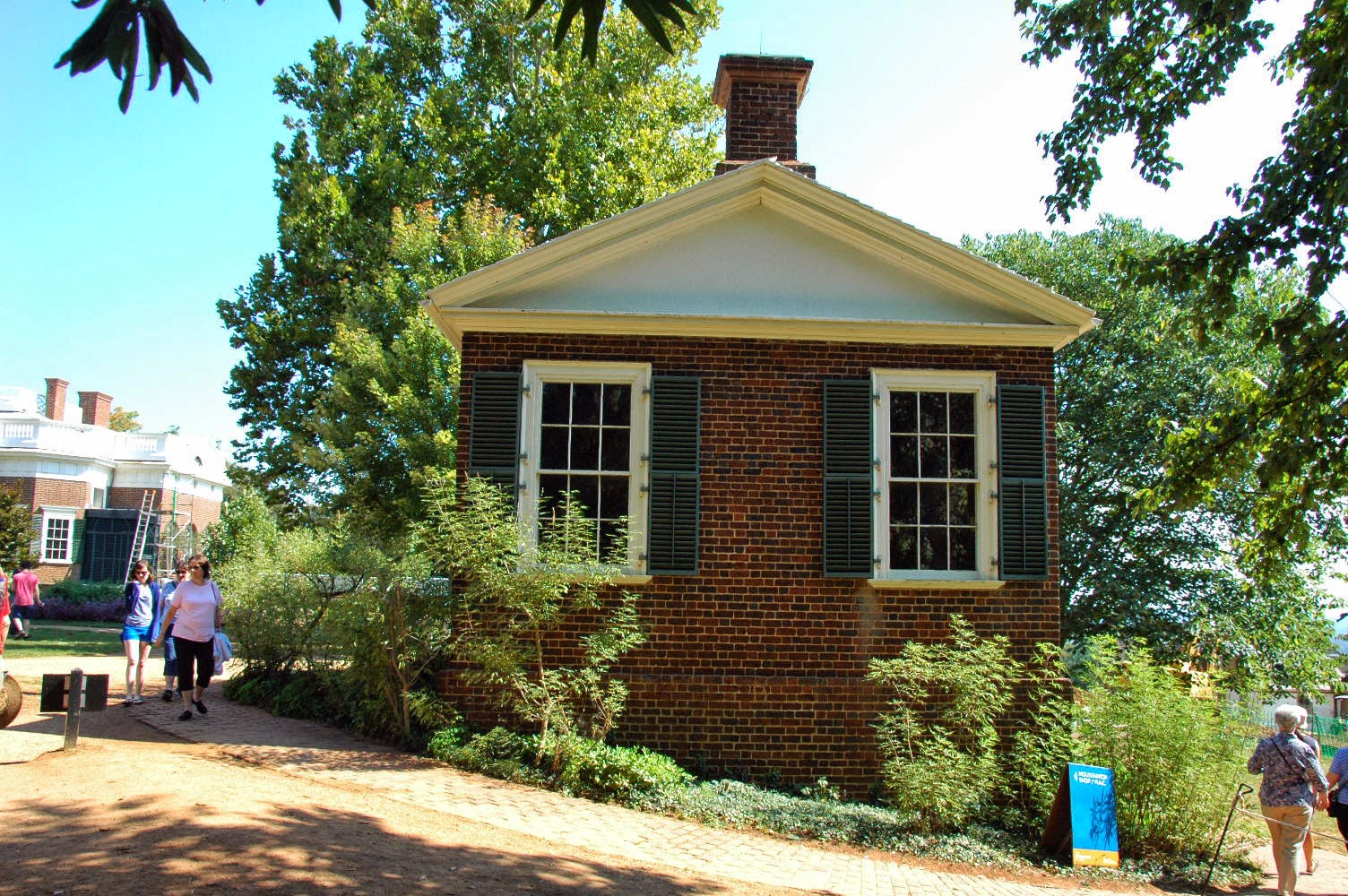On our last day in Waynesboro, VA we drove down to Thomas Jefferson's Monticello near Charlottesville, VA. It was just 33 miles from our campground.
This is the picture everyone thinks of when anyone speaks of Monticello. It wasn't the first thing we saw when taking the tour but one of the last things we saw after the tour of the interior first floor of the home. It took almost 40 years to complete or I should say to finish construction as Jefferson was frequently remodeling the home. He began construction in 1769 and finished around 1809.
A shuttle bus takes you from the Visitor Center up to the home where you wait until your tour time is called. While waiting I took some pictures of the grounds nearby including a peek at the house.
As our tour group approached the home we were told no pictures were allowed inside the home. There is a terrace on each side of the house with a pavilion at the end of the terrace L. The north terrace (on the right) was for guests and entertaining. The south terrace was for family. Below the terraces were all the things needed to support the household. Below was the kitchen, ice house, wine cellar, wood storage, carriage house, etc, as well as household servant quarters. Using a number of revolving doors with shelves and a lift for wine from below, the number of servants that appeared upstairs was minimized.

A weather vane of the roof was attached to an arrow on the ceiling of the porch with compass bearings so Jefferson could read the wind direction hourly. It also featured a clock that only indicated the hours as that was the frequency of his weather readings.
At the completion of the inside tour we were escorted to the public north terrace to get a view of the more famous side of the house. From there we walked the grounds seeing many different flowers and plants as well as the views of the house.
In the center and right is the south terrace and pavilion.

The left side of the picture is the north terrace and pavilion.
At the fish pond by the south pavilion we waited to take the Slavery at Monticello Tour which covered the area where many of the slaves lived and worked. Their quarters were located in an area called Mulberry Row.
The Jeffersons lived in the south pavilion for two years while the house was completed (well at least enough to be livable).
On the left of the photo of the garden area is a recreated slave workshop. Some of these cabins housed as many as 12 slaves or more and others were workshops. One was a nail making/blacksmith shop where boys ten to sixteen were expected to make 1000 nails a day six days a week. In other shops women wove flax into linen, another was the joinery shop (wood working shop).
Much of the garden was for Jefferson's experiments with various crops. In addition his orchards and vineyards covered some of the nearby land. The Monticello plantation was about 5000 acres which primarily produced wheat. Further south Jefferson owned a plantation that produced tobacco.
The joinery/turning shop being reconstructed.
Jefferson's grave in the family cemetery.
Monticello is not a National Park or Monument. It is owned by a private foundation since the 1930s which restores, maintains and operates it for the education and benefit of all.
Jefferson's Monticello is the only president's home that is a World Heritage Site, It is truly a wonderful place to visit. You can learn more at: http://www.monticello.org/

















No comments:
Post a Comment